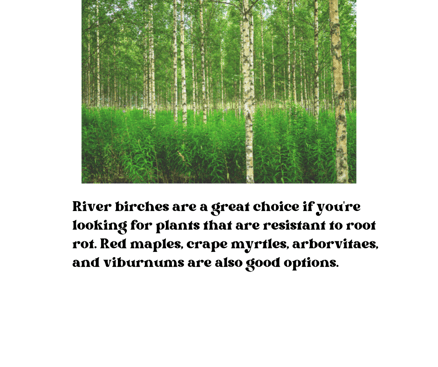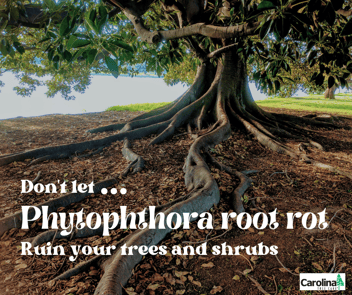Don't let phytophthora root rot ruin your trees and shrubs
You don't have to be a plant health care expert to know that overwatering your indoor plants can kill them. Well, the same thing can happen to your trees and shrubs. Overwatering your trees or shrubs and/or planting them in spots that don't drain well can lead to root issues like phytophthora root rot.
This week, we're diving into phytophthora root rot and how to spot it in your yard in Charlotte, NC.
How does phytophthora root rot start?
Phytophthora organisms are water molds that attack plants from below. They grow and thrive in wet, warm soil and hurt the roots and crowns of susceptible plants. And a lot of plants are susceptible when the soil within their root zones stays overly wet for long periods of time.
The disease starts by attacking the finer roots, which will discolor and decay. It will then spread to larger roots and the crown, causing the roots to go from a light brown or cream color to a reddish-brown or black.
As the roots decline and die, the plant won't be able to get enough of the water and nutrients from the soil that it needs, and then it's downhill from there.
Here's what a tree infected with phytophthora root rot could look like
Generally, if your tree or shrub has phytophthora root rot, it will experience slow growth and poor vigor. The rate of damage depends on where and how quickly the pathogen attacks your tree.
If it goes after your tree's roots, your tree may experience a slow decline over a period of years before finally dying. If the phytophthora root rot attacks at the crown or basal stem, your tree may die in a single season.
Some other signs and symptoms you can look out for include:
- Chlorotic or reddish-brown foliage
- Foliage loss
- Wilting
- Bleeding basal cankers
Unfortunately, for some trees, you may not see above-ground damage until long after the roots are severely damaged.
 Preventing and treating phytophthora root rot in your Charlotte, NC yard
Preventing and treating phytophthora root rot in your Charlotte, NC yard
Low-lying areas with poor drainage typically aren't the best places to plant most trees and shrubs, especially those susceptible to phytophthora root rot. To prevent this disease, plant in well-draining soil or consider creating mounds for your trees and shrubs.
There are plenty of tree and shrub species that are resistant to phytophthora root rot — red maples, river birches, crape myrtles, arborvitaes, and viburnums are just a few examples.
 If your tree or shrub is already showing the signs and/or symptoms of a phytophthora root rot infection, it may not be too late to save it. We offer foliar spray and soil drench fungicide treatments to get the infection under control.
If your tree or shrub is already showing the signs and/or symptoms of a phytophthora root rot infection, it may not be too late to save it. We offer foliar spray and soil drench fungicide treatments to get the infection under control.
Since the pathogen can survive in the soil for years if moist conditions continue, we usually recommend multiple treatments.
We can treat deciduous trees for phytophthora root rot from April until August. We can treat evergreen trees with the disease year-round as long as the weather cooperates.
A plant health care professional can help you determine whether phytophthora root rot is behind your sick tree or shrub. Request a consultation now!
Like what you just read?
Then you'll love this: The 7 Mistakes You're Making When Watering Your Trees








